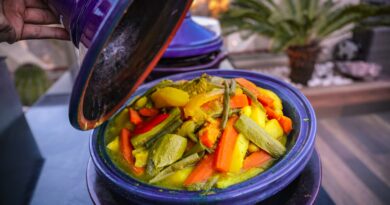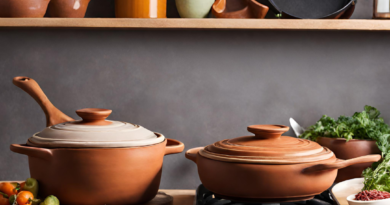How does clay cooking contribute to sustainability and eco-friendliness?
Clay cooking can contribute to sustainability and eco-friendliness in several ways:
1. Energy Efficiency
Clay pots and ovens are excellent at retaining heat, which makes them energy-efficient. They require less energy for cooking and maintain cooking temperatures well, reducing the overall energy consumption compared to some other cookware materials.
2. Renewable and Natural Resource
Clay is a naturally occurring material that can be sustainably sourced. Unlike some metal and non-stick cookware, clay cookware doesn’t require mining or the use of non-renewable resources in its production.
3. Minimal Environmental Impact
The production of clay cookware has a relatively low environmental impact compared to the manufacturing of metal or synthetic cookware materials, which often involve resource-intensive processes.
4. Longevity
High-quality clay cookware can be incredibly durable and long-lasting when properly cared for. This longevity means that you’re less likely to need frequent replacements, reducing the overall waste generated by cookware.
5. Recyclability
At the end of its life, clay cookware can be broken down and returned to the earth without causing harm to the environment. Unlike some non-recyclable materials used in cookware, clay is biodegradable.
6. Natural Flavors and Healthier Cooking
Clay cooking can enhance the natural flavors of ingredients and often reduces the need for excessive fats, oils, or added seasonings. This can promote healthier cooking practices and reduce the consumption of processed ingredients.
7. Versatility
Clay cookware is versatile and can be used for a wide range of cooking methods, from slow cooking to baking. This versatility can lead to fewer specialized kitchen appliances and cookware items, reducing kitchen clutter and resource consumption.
8. Local Artisan Craftsmanship
Supporting local artisans who create handmade clay cookware can contribute to the sustainability of local economies. Buying from local craftspeople reduces the carbon footprint associated with transportation and supports traditional craftsmanship.
9. Traditional Cooking Techniques
Embracing clay cooking techniques preserves traditional culinary practices that are often more sustainable and have been passed down through generations. These methods often prioritize using locally sourced and seasonal ingredients.
10. Reduction in Single-Use Items
Clay pots and dishes can be used for both cooking and serving, reducing the need for single-use cookware or serving dishes. This minimizes the generation of disposable waste.
While clay cooking can offer several sustainability benefits, it’s important to note that not all clay cookware is created equal. Some commercially produced clay cookware may contain additives or coatings that can impact its eco-friendliness. Therefore, when choosing clay cookware, it’s a good practice to select high-quality, unglazed clay pots and dishes made by reputable manufacturers or artisans who prioritize sustainability and natural materials.



